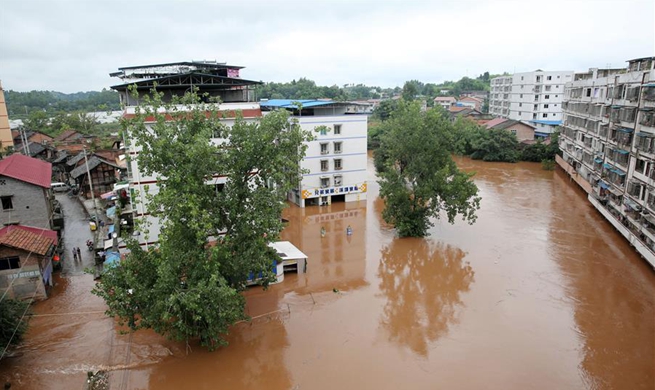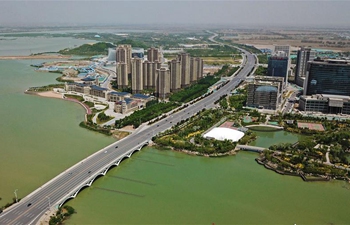BEIJING, July 4 (Xinhua)-- A team comprising researchers from China Medical University and the University of Hawaii on Wednesday unveiled their new breakthrough in water filtration technology at the ongoing 7th International Congress & Exhibition on "Arsenic in the environment."
Sun Guifan, director of the College of Public Health at China Medical University in Shenyang, told reporters that they managed to produce a filtration medium which has been certified to effectively reduce arsenic V to below U.S. Environmental Protection Agency (EPA) and the World Health Organization (WHO) advisory levels of 10 parts per billion (ppb).
The technology was researched, developed and refined over a period of 12 years at the University of Hawaii with the collaboration of China Medical University.
According to Sun, the filtration material features iron-coated granules with 1-50 nm-sized pores, which can immobilize arsenic, lead, mercury and other heavy metals as well as bacteria and viruses.
Most importantly, after the filtration no secondary contamination will be made as arsenic is "trapped" safely in the pores. It is effective and easy to use.
In 2017, Global public health organization NSF International certified the first drinking water pitcher to reduce arsenic V (pentavalent arsenic)-- the NanoNose Pitcher Filter System, invented and developed by University of Hawaii professor Liangjie Dong. In 2018, the independent organization also certified the filtration cartridge, which houses the NanoNose filtration technology for pour-through water filters.
Arsenic in drinking water threatens public health worldwide. Long-term drinking of arsenic-contaminated water results in skin lesions, pigmentation changes, hyperkeratosis and a higher chance of developing cancers of the liver, kidney and bladder, as well as heart disease. More than 100 million people worldwide are expected to be chronically exposed to arsenic in drinking water.
In most countries, including China, it's more because of natural conditions than industrial causes because many countries and regions have high concentrations of arsenic in groundwater.
Removal of arsenic from water is a challenging task. The treatment method needs to take into consideration the water quality prevailing in different regions. A household or community-based water filtration device would be most practical in removing arsenic from drinking water and could serve as an important complementary measure to more costing projects like transferring water source, said Sun.
International Congress & Exhibition On Arsenic in the Environment is a six-day event organized for researchers, students and industries to discuss the impact on human health coming from drinking water and certain food with low-medium levels of arsenic for prolonged periods of time. Since 2006, six events of the congress has been held in Mexico, Spain, China's Taiwan, Australia, Argentina and Sweden.
















